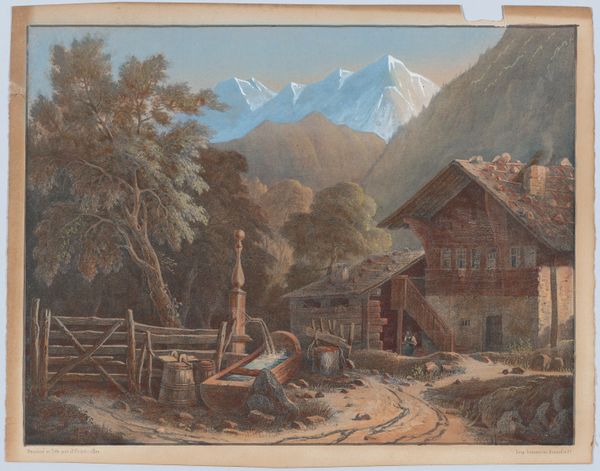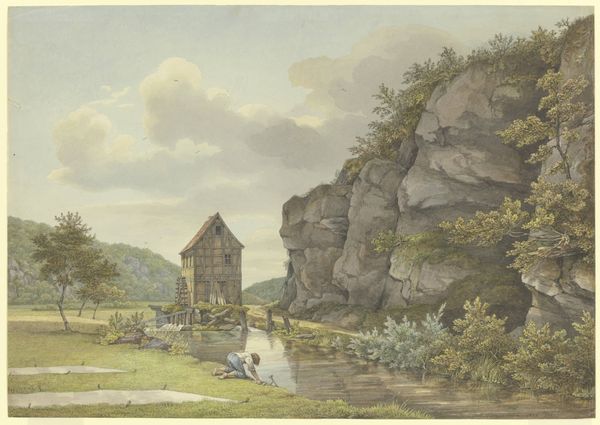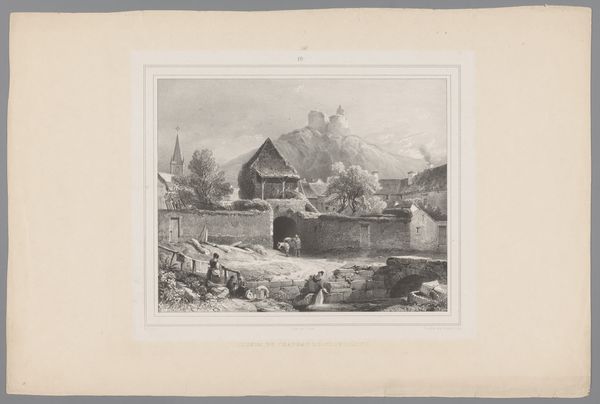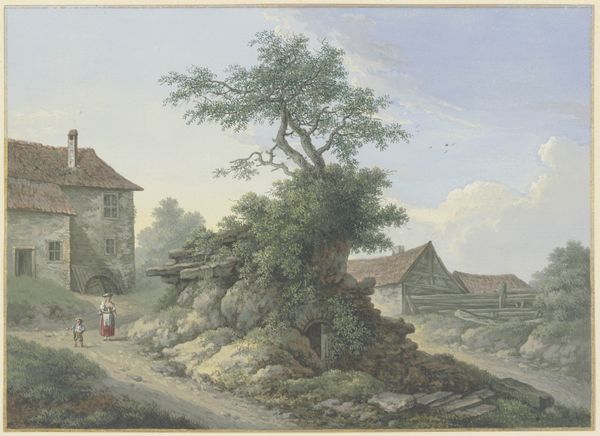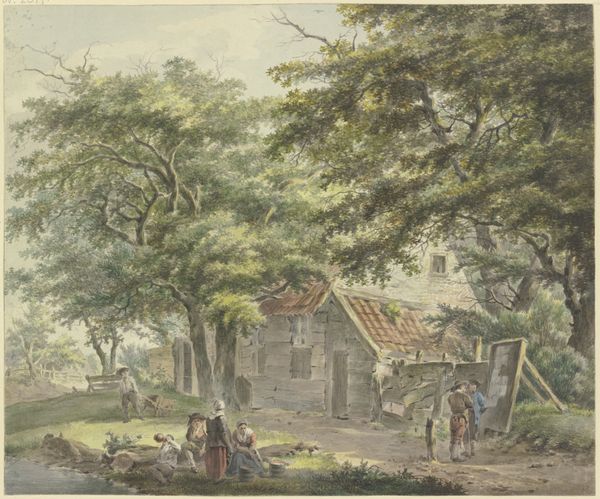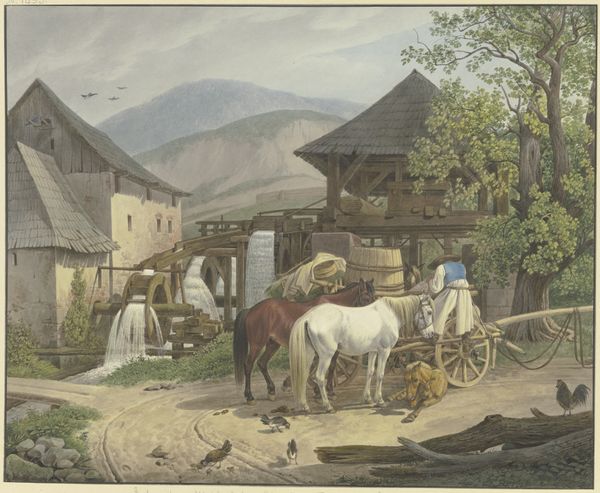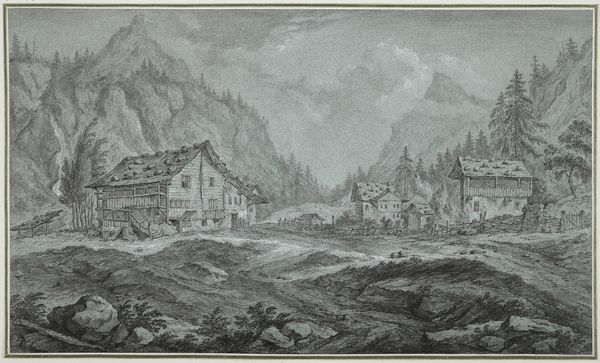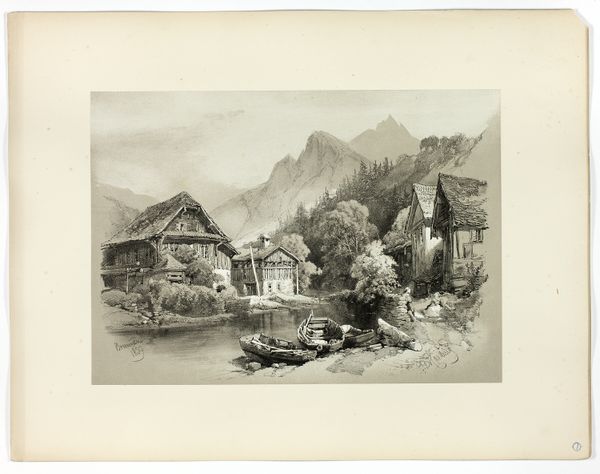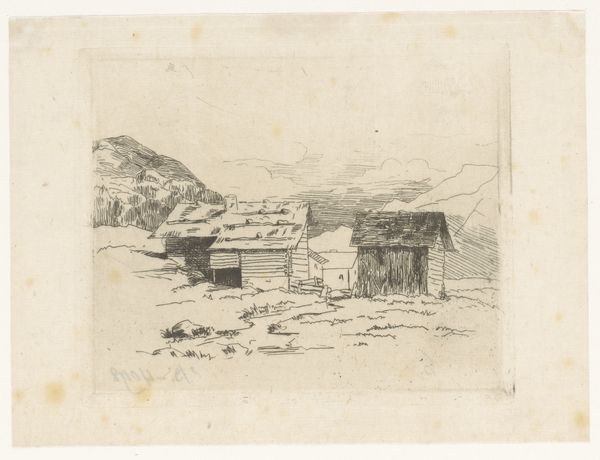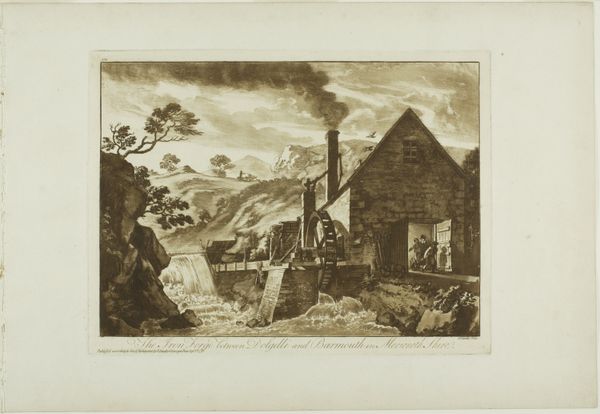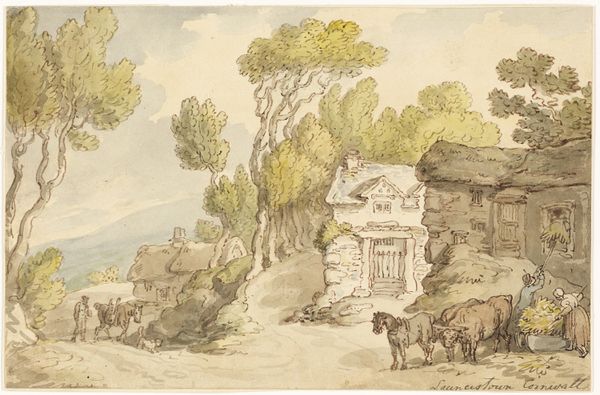
drawing, print, watercolor
#
drawing
# print
#
landscape
#
watercolor
#
romanticism
#
mountain
#
watercolour illustration
#
watercolor
Dimensions: Sheet: 7 3/4 in. × 10 in. (19.7 × 25.4 cm) Image: 7 1/8 × 9 3/8 in. (18.1 × 23.8 cm)
Copyright: Public Domain
Editor: This watercolor and print, "Alpine Scene," by Henri Boug d'Orschwiller, probably made sometime between 1800 and 1850, evokes a quiet stillness with its depiction of a building nestled in a mountain landscape. What immediately grabs my attention is the texture, from the roof to the distant peaks. How do you interpret this work, focusing on its form? Curator: Notice how the artist creates a compositional tension between the foreground architecture and the background mountains, playing with both linear and atmospheric perspective. The shadowed textures of the building sharply contrast with the soft gradients used to render the snow-capped peaks. How do you see color functioning in relation to this contrast? Editor: Well, the cooler blues and whites of the mountains definitely recede, while the warmer browns and greens of the building advance, emphasizing its presence. But is this just about creating depth? Curator: It also emphasizes structure and materiality. Consider the placement of the house relative to the mountains. The human-made versus the natural. Are we meant to find harmony in the balanced composition, or a tension in their juxtaposition? Editor: That’s interesting. It does feel like the house, despite its solidity, is almost vulnerable against that imposing mountain range. The way the path leads from the house toward those heights suggests aspiration or perhaps pilgrimage. Curator: Precisely. This subtle directional play furthers our perception. But it's also in the details - look at how the eye travels upwards in a diagonal from the bottom right into the architecture on the left, only to then glance up to the snow in the distance! There is so much at play here! Editor: Seeing how the forms guide the viewer’s experience reveals so much more than just a pretty landscape. Thank you for your insights into the picture's internal dynamics and use of the alpine scenery! Curator: Indeed. It is often in the intrinsic visual elements, like composition, form, and texture that one gains insight. Analyzing these elements of this Romantic piece shows us how powerful they can be, which provides endless opportunity for interpretation!
Comments
No comments
Be the first to comment and join the conversation on the ultimate creative platform.
